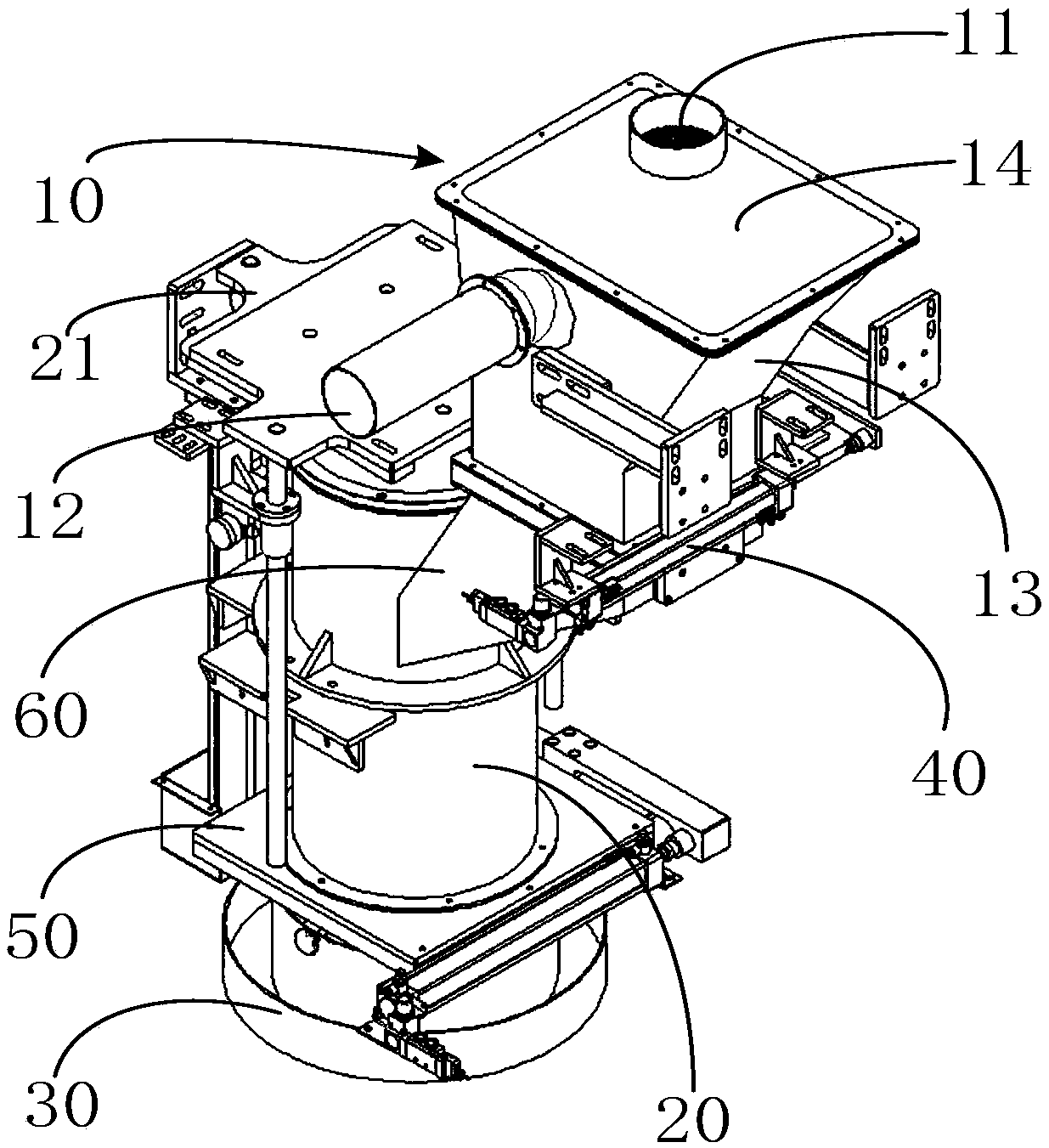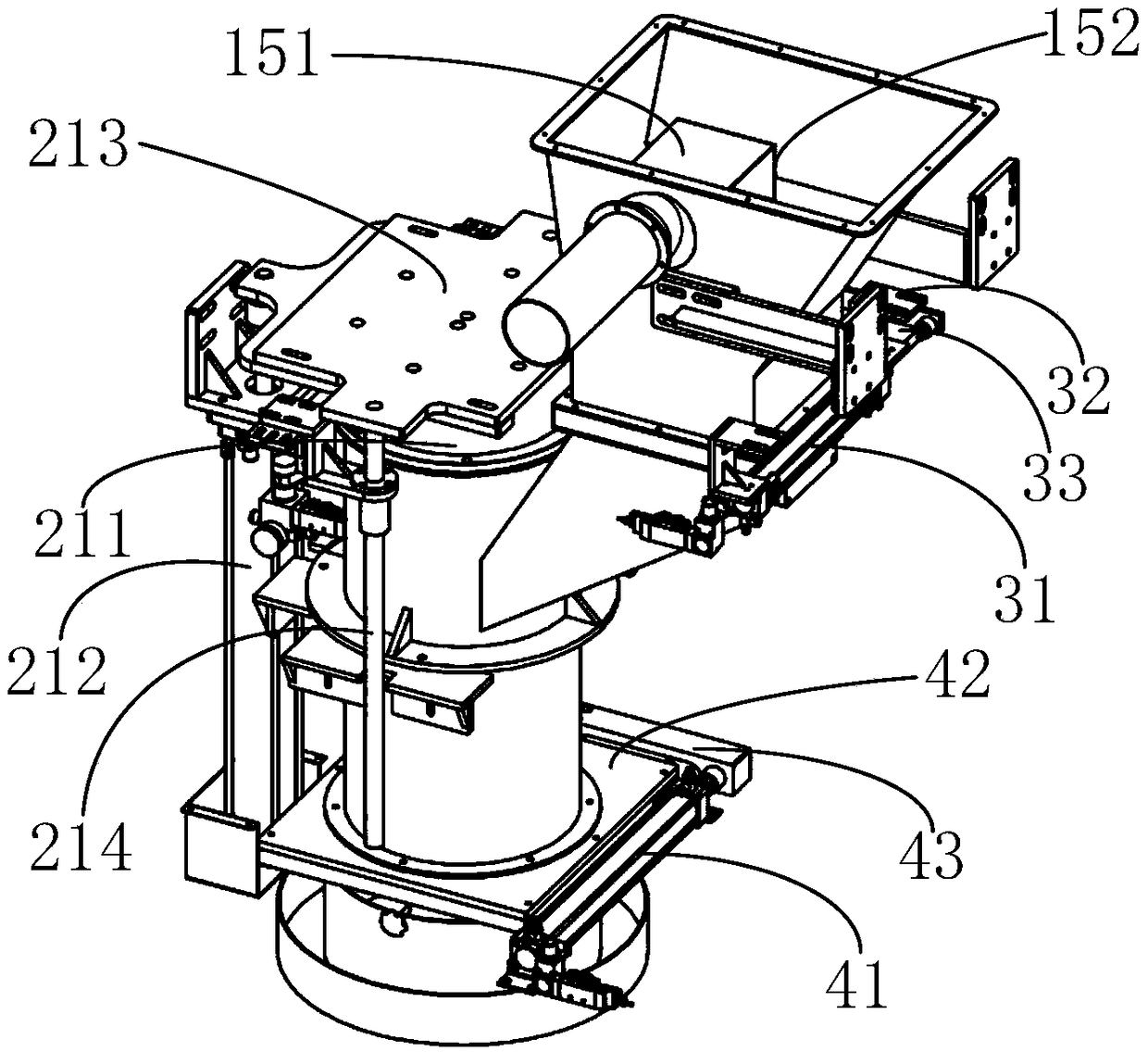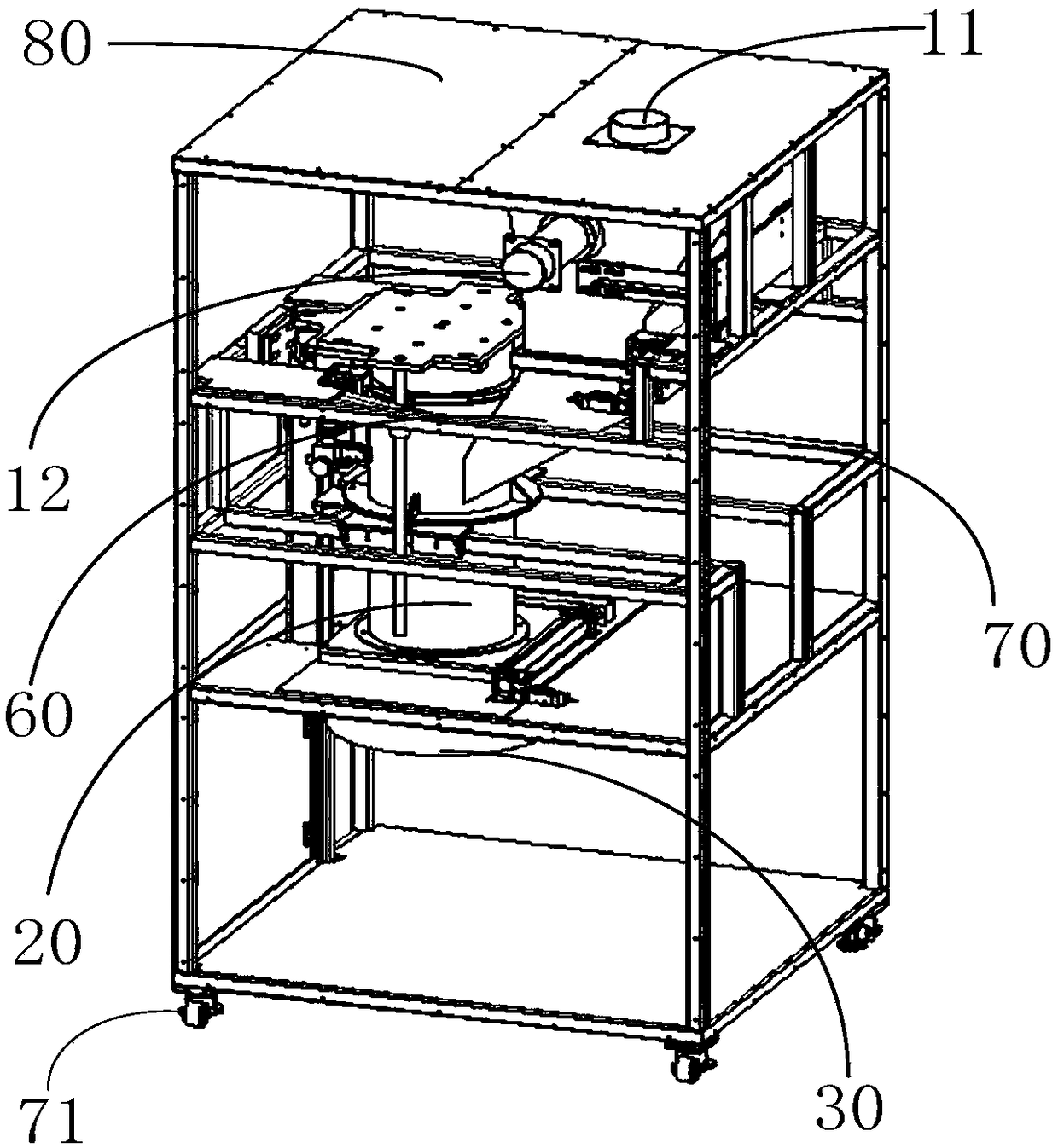Waste collecting device
A waste collection and waste technology, applied in the direction of presses, chemical instruments and methods, manufacturing tools, etc., can solve the problem of increasing the production cost of secondary collection of waste
- Summary
- Abstract
- Description
- Claims
- Application Information
AI Technical Summary
Problems solved by technology
Method used
Image
Examples
Embodiment Construction
[0025] The present application provides a waste material collection device, in particular a collection device for collecting scraps generated after pole pieces are cut by laser lug cutting equipment. Of course, in other embodiments, it can also be used to collect scraps produced by other production equipment when cutting materials.
[0026] The present application will be described in further detail below through specific embodiments in conjunction with the accompanying drawings.
[0027] see figure 1 As shown, the waste collection device provided in this embodiment mainly includes: a first waste bin 10 , a second waste bin 20 and a third waste bin 30 . The first waste box 10 is used for absorbing and buffering the waste (scrap) produced by the laser tab cutting equipment after cutting battery pole pieces, and outputting the stored waste to the second waste box 20 . The second waste box 20 and the first waste box 10 can be communicated or isolated. When the second waste box ...
PUM
 Login to View More
Login to View More Abstract
Description
Claims
Application Information
 Login to View More
Login to View More - R&D
- Intellectual Property
- Life Sciences
- Materials
- Tech Scout
- Unparalleled Data Quality
- Higher Quality Content
- 60% Fewer Hallucinations
Browse by: Latest US Patents, China's latest patents, Technical Efficacy Thesaurus, Application Domain, Technology Topic, Popular Technical Reports.
© 2025 PatSnap. All rights reserved.Legal|Privacy policy|Modern Slavery Act Transparency Statement|Sitemap|About US| Contact US: help@patsnap.com



